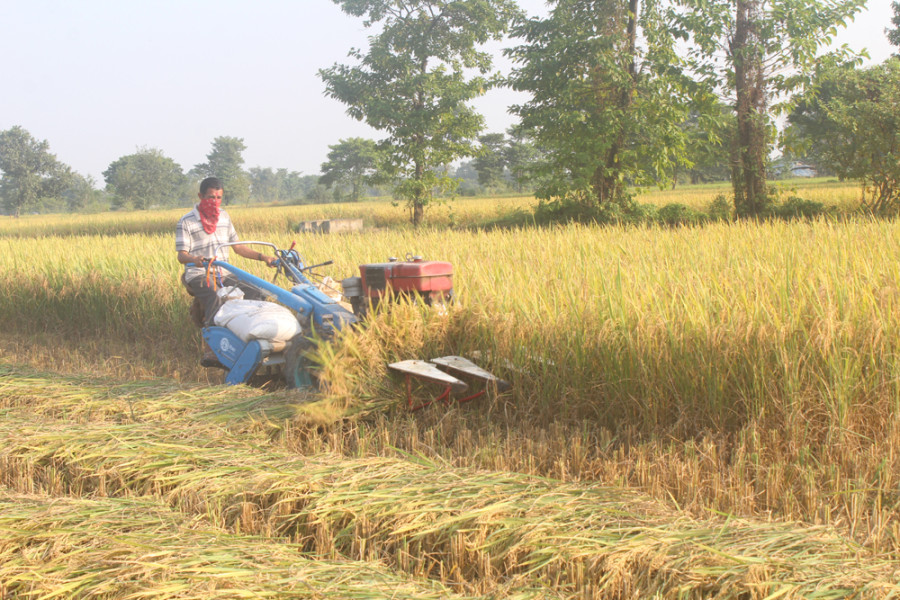Money
Cabinet announces minimum support price of paddy
The minimum support price of common paddy has been hiked to Rs26.73 per kg and ‘mota dhan’ at Rs25.32 per kg
Sangam Prasain
The government has announced the minimum support price of paddy as farmers prepare to harvest the crop across the country.
The government spokesperson and Minister for Communication and Informational Technology Gokul Prasad Baskota told the weekly press briefing on Thursday that the Cabinet approved the Ministry of Industry, Commerce and Supply proposal to hike the minimum support price of paddy for this season.
According to him, the minimum support price of common paddy has been hiked to Rs26.73 per kg this year, from Rs24.60 per kg last year. Similarly, the minimum support price for ‘mota dhan’ has been set at Rs25.32 per kg, up from Rs23.31 last year.
The floor price is the lowest price that can be charged for a commodity.
The minimum support price is a measure taken by the government to protect farmers against sudden slumps in the market price. It is what the government will pay farmers for their crops when there are no other buyers in the market.
The measure is intended to encourage farmers to grow crops. The price is computed based on the cost of production, transportation charges and inflation.
The government resumed setting the minimum support price for paddy since 2016 after suspending the practice for nearly two decades.
Normally, the government announces the minimum support price for paddy in time for farmers to make their production plans before the beginning of the planting season. The support price fixed by the government means that farmers will get a reasonable price for their harvest even if there is a huge drop in prices.
In case the market price of paddy drops below the base rate fixed by the government, it is obliged to purchase it from farmers at the support price.
Last year, the government had fixed the minimum support price of paddy in the last week of July. This year, it is overdue by almost three months, and some farmers have already started to harvest their crops.
The government projected a fall in paddy output this year due to a late and ‘below normal’ monsoon and a critical shortage of chemical fertilisers caused by delays in imports during the peak season.
Nepal’s paddy harvest hit a record high of 5.61 million tonnes in 2018-19, with all-time high productivity of 3.8 tonnes per hectare. Nepali farmers produced 5.23 million tonnes of paddy in 2017-18 and 5.3 million tonnes in 2016-17. In 2015-16, paddy output was recorded at 4.3 million tonnes.
The agriculture sector contributes 27 percent to the country’s gross domestic product, while the contribution of paddy alone stands at 6 percent.




 8.12°C Kathmandu
8.12°C Kathmandu















